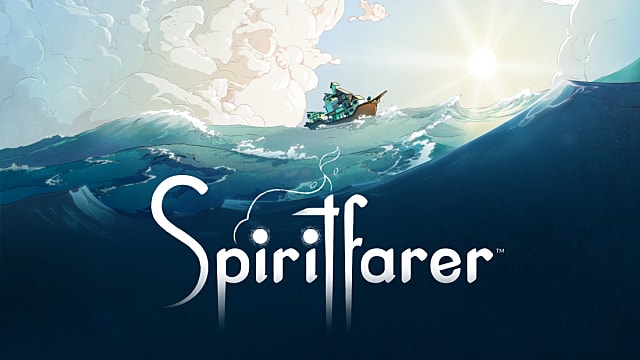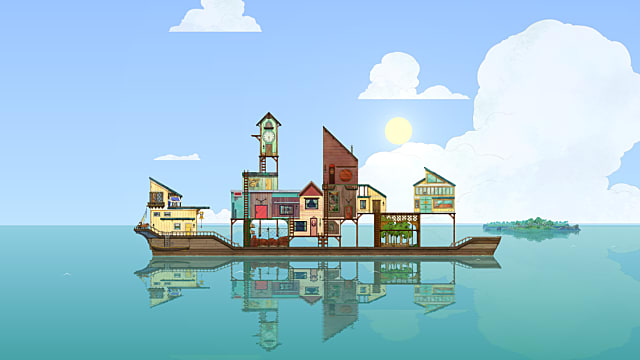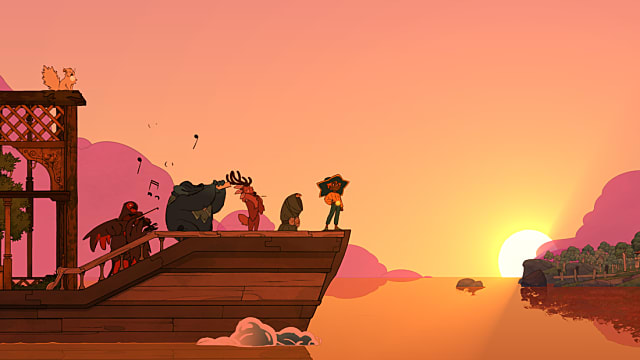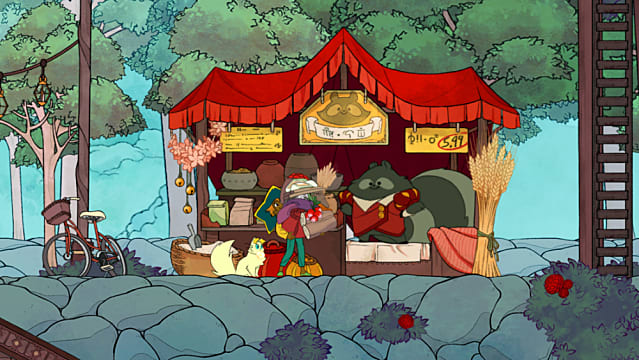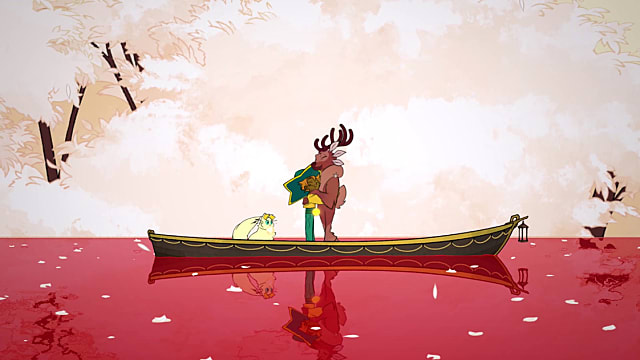Instead of relying archetypal morbidity, Spiritfarer punches you in the heart and makes you cry, all in a cozy, Ghibli-style setting. It’s a juxtaposed premise that we don’t often see in gaming, and it’s something that’s intrigued me about the game since it was briefly announced during Microsoft’s E3 2019 press conference.
I had even more questions after I took advantage of the brief demo available last December.
Fortunately, I got the chance to talk with Nicolas Guérin, creative director at Thunder Lotus, about Spiritfarer’s inspirations and strong emotional ties to the development team.
Guérin and the team probably heard this question countless times since announcing Spiritfarer, but naturally, I had to ask it, too: why focus on death, and where’d the idea come from?
Guérin said Spiritfarer was in the works before he joined the team. Thunder Lotus wanted to continue with its unique focus on the stories and universal truths contained in mythology, like they had with Jotun. This time around, though, the team changed its focus from Norse mythology to Greek, imagining the story of Charon in “Ghibli-like visuals.”
It’s hard to imagine two more different styles: the grim ferryman of the underworld in one, and Stella, with her magic hat, bright smile, and lovable feline companion Daffodil in the other. However, that contrast was an important part of the creative process.
Guerin continued by saying the goal was to do something completely different with how games treat death.
And it’s not hard to see where this sentiment comes from. Death is many things in video games, from annoying failure state to something we mindlessly inflict on others, but rarely is it a topic for discussion or genuine reflection. Some, like A Mortician’s Tale, attempt to view death from a positive lens, but devolve into traditional gaming gimmicks and don’t encourage people to connect with the topic.
We as humans (and arguably furthermore in the “western” culture) obviously have a hard time considering what is ultimately something so deceptively common.
Guerin sees that as a missed opportunity for the medium. Because of how games let “us interact with concepts in a unique way. … death actually happens to all of us. And although it’s incredibly hard to see it this way, it’s actually ok.”
Despite seeing that same promise in the initial reveal trailer, I was still surprised how well the team managed to carry it out — even in just the short demo I played in 2019. You might not feel okay while playing Spiritfarer, but that’s because it’s such an intimate experience — on purpose.
We see characters die in games all the time after all. Melodramatic deaths, sad deaths, pointless deaths. Sure, it’s melancholic at times, but it doesn’t often make one feel too much, if at all.
It’s not by chance Spiritfarer is succeeding in this, though. That, too, was a carefully considered part of the plan. The Thunder Lotus team is pulling from their own experiences to help players connect with their passengers and, in turn, their emotions.
It makes sense, then, to balance this kind of emotion with a Ghibli-like setting, to keep things from getting too overwhelming.
It’s always been very important to us that all characters would feel real, and not just simple video game characters.
So, although they’re not carbon copies of actual persons, I can tell you that tons of research (and many boxes of kleenexes) went into the creation of those Spirits!
It also seems safe to say that the Ghibli style extends past the visuals and into the storytelling as well. Part of that could stem from the game’s distinct slice-of-life feel, something it also shares with many of Studio Ghibli’s works. It’s most prominent in the simulation aspect, where players guide Stella as she builds her boat and cares for her friends on board.
Those simulation and management elements are rewarding if complex. Yet for all of the moving parts, they aren’t meant to overwhelm the player, but instead add layers of simplicity that grow into more robust wholes.
It’s a lot to put into one game, a lot of different inspirations and styles. But Guérin says it’s all been carefully structured to ensure it never feels game-y or so it doesn’t distract from the core concepts.
There is a sizable amount of platforming and exploration gameplay in Spiritfarer as well, which ties into the building boat building mechanics (the way the boat is built affects how sea events are played) or the various islands you get to explore.
That extends to one of my favorite parts of what the demo offered: the hug mechanic. Stella can offer a hug to her passengers, and like in real life, sometimes they want it, but sometimes it annoys them. It seems such a small touch, but the impact in how it organically encourages you to view the spirits in your care is pretty substantial.
So the difference between, say, Stardew Valley or Harvest Moon and us, is that everything you do has been at some point taught to you by the spirits.
Including it was fairly organic as well, and Guérin mentioned it was basically impossible to create a game about care and empathy without including any kind of physical affection. Still, it wasn’t always planned from the start.
It’s clear how much effort and care have gone into every aspect of Spiritfarer, but there was still one thing that bothered me after the demo.
As Stella interacted with the Spirits and had to take care of them, the hug mechanic just felt like a natural thing to do.
In the scenario, Stella is helping Summer the snake-monk build her ideal room for meditation and contemplation. Then, Summer surprises Stella by saying she knows it’s time for her to go. Stella’s reaction is brief, possibly too brief I thought at the time — a short, surprised look, a hand stretched out to Summer, and then it’s back to her usual smiling face.
Any media creation runs the risk of being interpreted in ways the creator never intended, and I was concerned that death could seem as too cozy and natural for people playing it who might be at risk.
Guérin put those fears to rest, though:
With that in mind, I asked Guérin if he had any closing thoughts he wanted readers and eventual players of Spiritfarer to walk away with:
